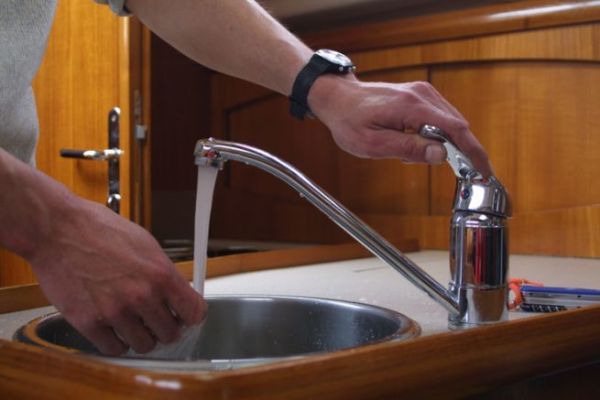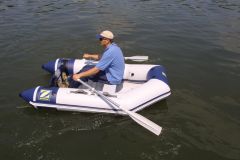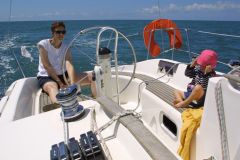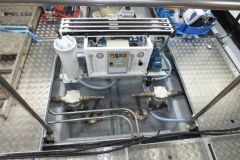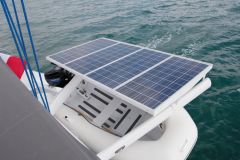" You really realize the value of water when you're out at sea. "This sentence, uttered by a sailor I met on the Balearic Islands, has never left me. On a long cruise, fresh water becomes an obsession: you have to manage it, keep an eye on it and sometimes even look for it. A luxury for those who are used to turning on the tap on land without ever thinking about it.
Between the crew, the boat and the vagaries of navigation, learning to live with a limited fuel tank and often precarious autonomy is a real art. In this article, we delve into the heart of this particular management, where technique and seamanship intersect.
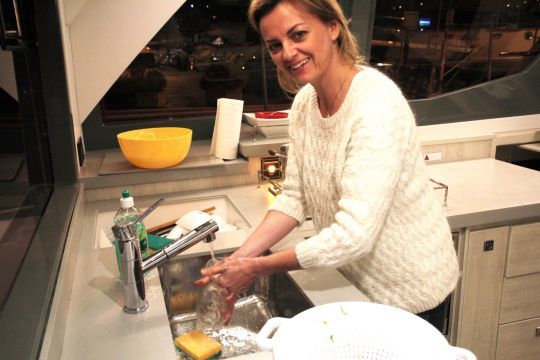
Consumption on board: finding a new balance
On land, it's easy to underestimate our daily water consumption. A ten-minute shower? 80 liters. Washing up? 15 to 20 liters. When you're at sea, this luxury instantly disappears, replaced by more measured gestures.
On my first 15-day ocean cruise, our skipper set a target of 10 liters of fresh water per person per day. Not a drop more! In other words, the slightest waste became a drama. But surprisingly, we adapted. We learn to rinse ourselves in seconds, wash our dishes in a basin using sea water for washing, and reuse every trickle of fresh water.
Some on-board consumption guidelines :
- Drinking and cooking: 3 to 5 liters per person per day
- Hygiene (quick cleansing, hand washing): 2 to 3 liters
- Dishes and cleaning: 2 liters
The first few days are often the hardest. The simple pleasure of a long shower becomes a distant memory, but you also discover a new relationship with water. It becomes precious, almost sacred.
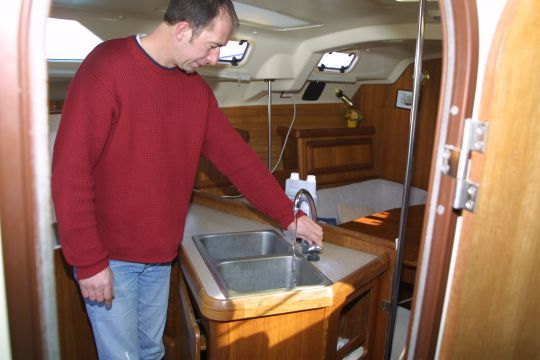
Reservoir management: a compromise between capacity and constraints
On a sailboat, freshwater tanks are the starting point of any strategy. If too small, they limit autonomy; if too large, they weigh the boat down, which can affect performance.
Let's take the example of a 12-meter sailboat, typical for an ocean crossing. It often has fixed tanks of around 300 to 400 liters. This may seem sufficient, but in reality this capacity can melt away in a week with a crew of four if you're not careful.
Here's an anecdote to illustrate the point. We came across a crew whose fuel tank had cracked in the middle of a crossing. In just a few hours, they had lost half their reserve! Fortunately, they had installed additional flexible tanks in case of problems, which enabled them to arrive safely. This story just goes to show how essential it is to have a plan B, whether it's emergency tanks or a desalinator.
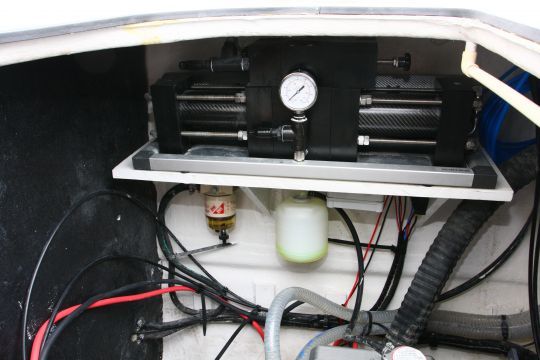
Producing your own water: the desalinizer revolution
The advent of desalinizers has changed the face of ocean cruising. These devices, capable of transforming seawater into fresh water, offer almost unlimited autonomy... as long as you are aware of their limits.
Which models to choose?
- Portable (manual or electric): flow rate from 4 to 8 L/h
- Compact fixtures: 30 to 60 L/h, ideal for cruising sailboats
- Large models: up to 150 L/h, but high energy consumption
Average cost of desalinizers :
- Manual: ?800 to ?2,000
- Small electric model (12V): ?2,500 to ?5,000
- High yield: ?6,000 to ?15,000
One crew member explains: "We used a desalinator that produced 30 liters per hour. The crew was delighted to be able to take showers, but a power failure soon put an end to this luxury. We had to go back to basics: watch every drop and prioritize uses".
Producing your own water is safe, but it should never become an excuse for waste. A desalinator requires maintenance:
- Filters to be changed every 3 to 6 months (price: ?50 to ?150 depending on model)
- Membranes to be rinsed regularly (replacement cost: ?300-800)
- Energy source (solar panels, wind turbine, generator)
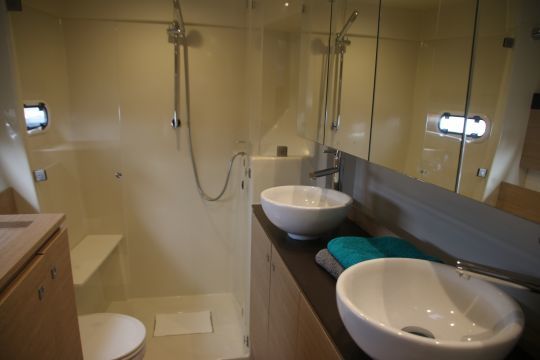
Save water every day: simple, effective actions
At sea, water management becomes almost a game. Who will take the fastest shower? Who can wash the whole crew with a 5-liter basin?
Practical equipment :
- Low-pressure sprayers: ?10-15
- Solar showers: ?30-60
- Tap filters: ?20-50
- Purifying tablets: ?10-30
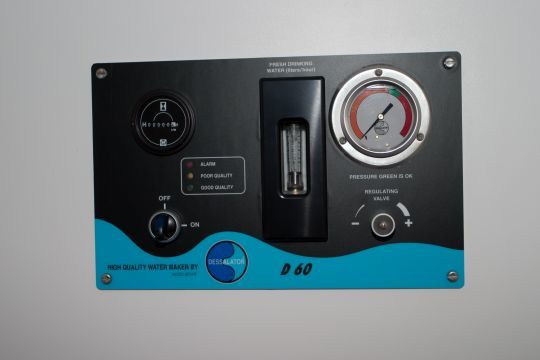
Water in port: provisioning and precautions
Ports of call are often an opportunity to refill tanks, but beware of water quality. In some ports, particularly in Asia and South America, the water in the terminals may be unfit for consumption.
- Always use a carbon filter when filling
- Add purification tablets to avoid contamination
- Check water for odour and color before use
Another important point: don't wait until the last minute to fill up. Ports can be overcrowded, and hydrants can be out of order or saturated. Careful planning is essential.
Conclusion: water, a daily but surmountable challenge
Managing water on board a sailboat is a mixture of rigor, adaptability and sometimes ingenuity. Each crew develops its own tricks, but all share the same rule: never underestimate the value of this resource.
By learning to live with less, we discover a form of happy sobriety. Every shower becomes a reward, every liter a victory. Above all, we become aware of our dependence on this precious resource.
So, are you ready to embark on a cruise where water will be your best ally and your greatest challenge?

 /
/ 